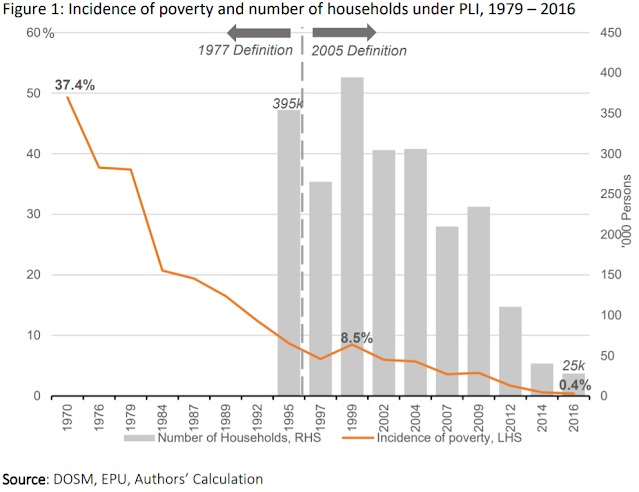Number of Poor Households, 1979 - 2016 (Khazanah Research Institute, 2019)
TO CITE:
Khazanah Research Institute. (2019). The Absolute vs Relative Poverty Conundrum. Retrieved from http://www.krinstitute.org/assets/contentMS/img/template/editor/Views_The Absolute VS Poverty Conundrum.pdf
POVERTY LINE INCOME
Malaysia uses the poverty line income (PLI) to measure absolute poverty. The current PLI methodology is revised in 2004/2005.
Prior to that, the PLI is calculated for a model household of five members in 1977, updated annually with the consumer price index (CPI).
After the revision, the PLI is calculated for each household, adjusting for household composition, age distribution, gender, and regional differences.
The underlying philosophy is still cost of basic needs, calculating the amount of household expenditure needed to fulfill both food and non-food needs, and using income to determine whether households fall above or below the poverty line.
POVERTY RATE
The incidence of poverty fell
from 37.4% of households (394,797 households) in 1979 to 8.5% in 1999, further falling to 0.4% (370,097 households) in 2016.
The decrease in poverty rate is
attributed to rapid economic growth, distribution policies and improvements in public services in
the last three decades.
However, despite updating the PLI with the CPI to reflect changing cost of living, Malaysia’s
poverty line is still lower than expected when compared with countries that have similar mean
incomes.



Comments
Post a Comment